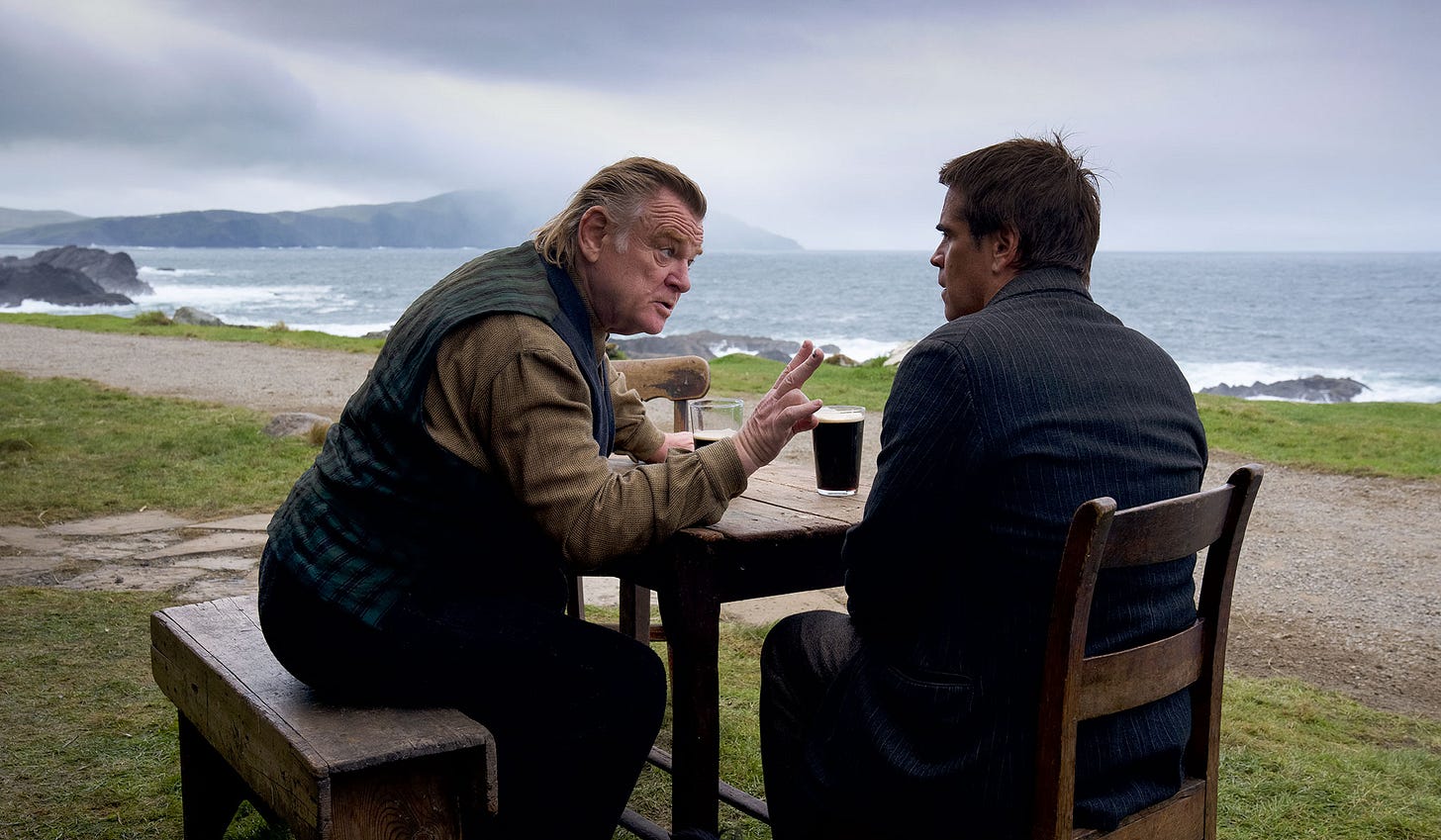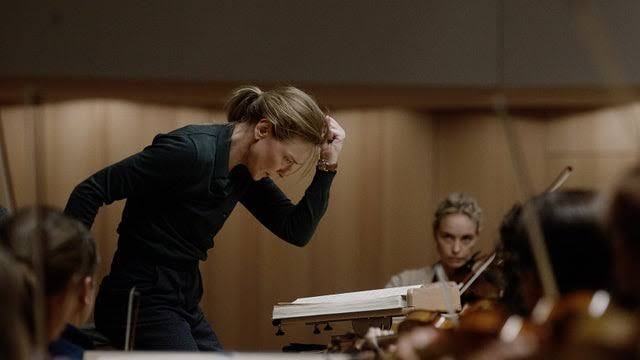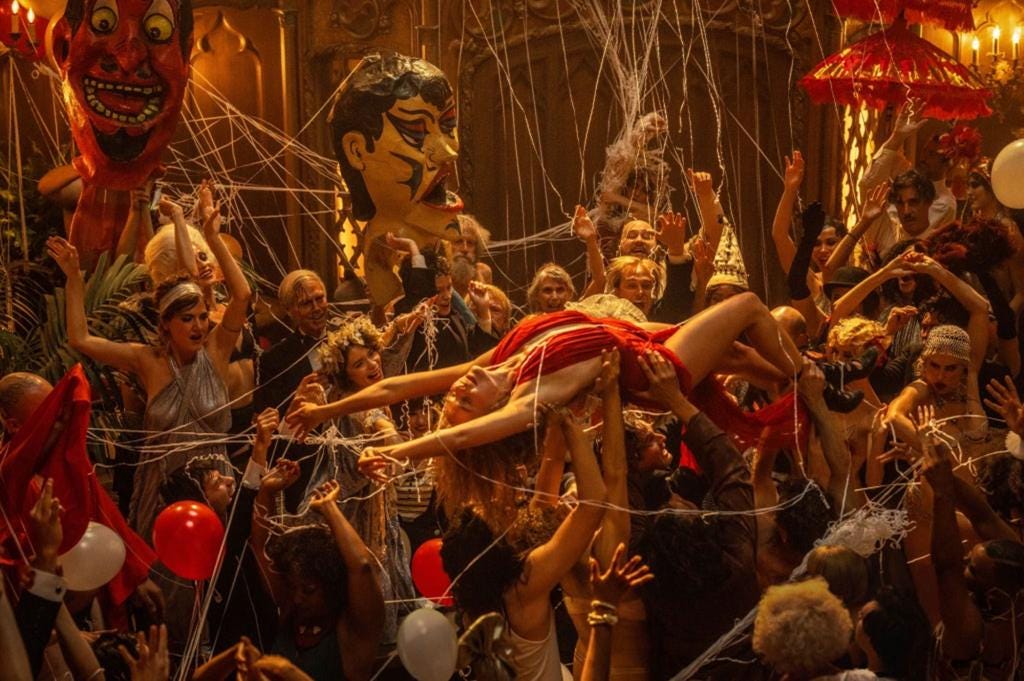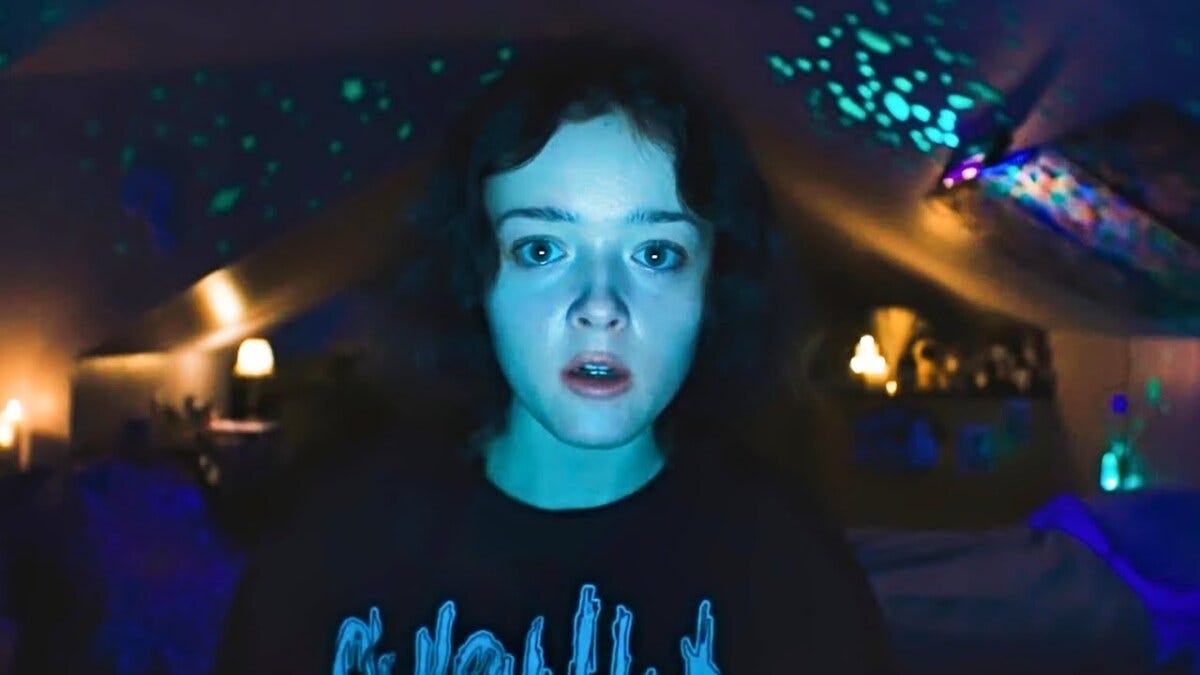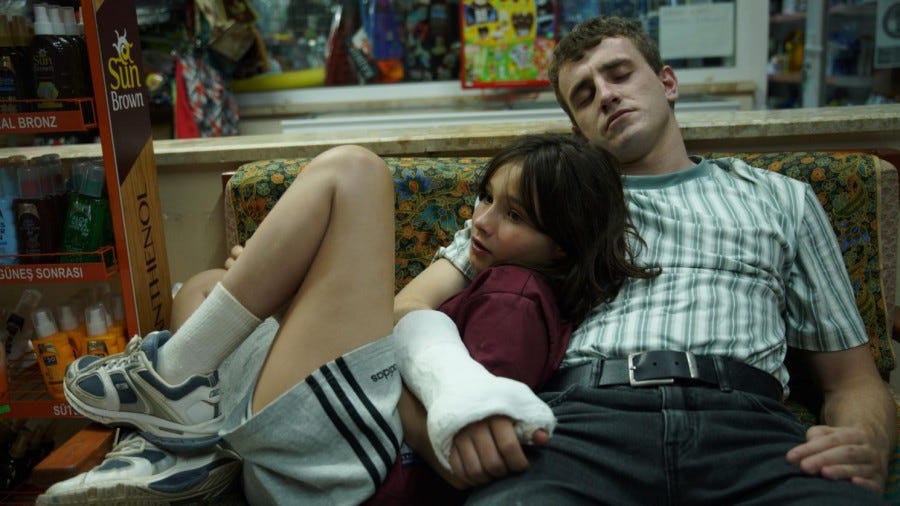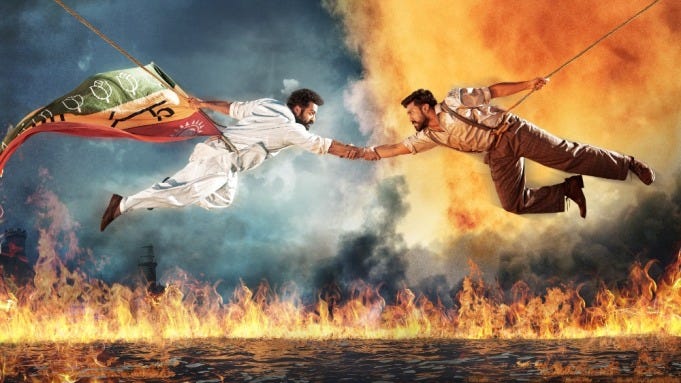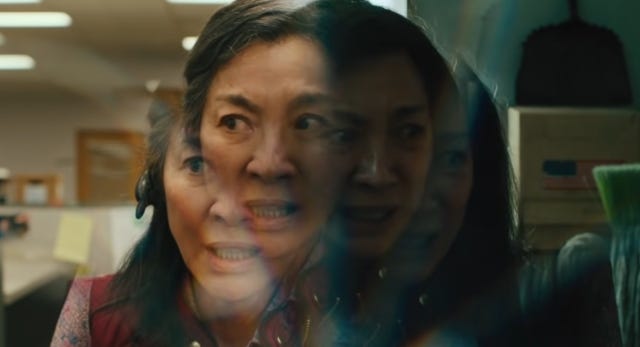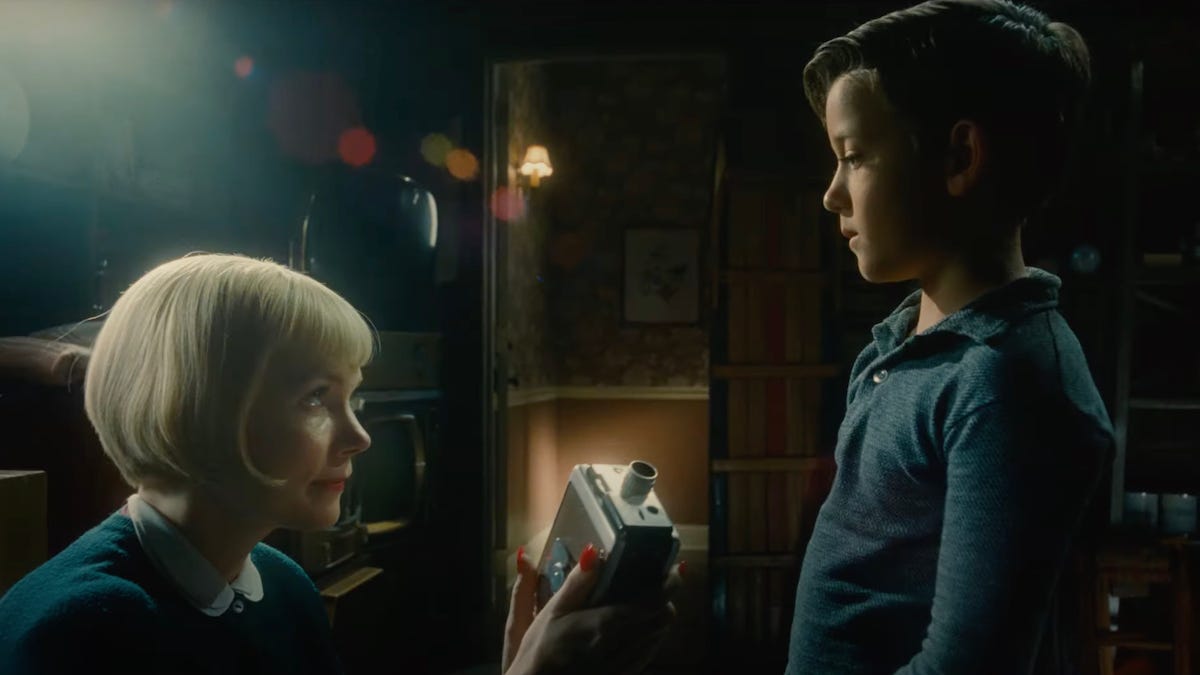If you liked four star cinema, 2022 was a good year for movies. Lots of great films were released that didn’t quite hit masterpiece status, most of them about depression, debauchery, divided class, or some combination thereof. We still went to the movies (or, the disgustingly more likely alternative, sat on the couch) for escapism, as Top Gun: Maverick so clearly illustrated in its fairy tale version of militarism. But just as often we found movies the took our breath away with truth about who we are.
I loved going to the movies this year, and every film on this list deserves preservation far into the future. As we head into 2023, my takeaway from the last year was to go out and discover cinema. I implore you to go see movies in the theater that you don’t know are your thing. Put down the distractions and find something you don’t know if you’ll like, something critics and artists and voyeurists of truth said is good, and go watch it.
This top ten list isn’t just my favorite movies of the year, though many of them are, but the films I found the true best, cream of the crop, greatest bits of cinema, and the products of my ongoing war on my own subjectivity. If you like my analysis, first of all, share it with someone else. But also check out the trailers I’ve linked below each image! Watching them will give you an idea of what the movie is and hopefully open your eyes to something new. Without further ado, here are the best movies1 of 2022!
10) The Batman (dir. Matt Reeves)
While praised, I suspect that The Batman is being undervalued by critics burnt out on superheroes, especially the caped crusader. Taking a filth-soaked approach to the hero that evokes David Fincher’s work and other neo-noirs, director Matt Reeves finds new ways to use the character as a commentary on modern society and politics. The villains of The Batman reflect a fear we all face; that our lives are controlled by only the powerful and the radical rebels. While still preserving a darkly unique identity, Gotham City becomes Anyburgh, USA, where crime runs like blood or water through the veins of the city.
On the one hand, I am embarrassed by this movie’s inclusion; it feels like it delegitimizes my place as a critic to a baby pointing at a superhero movie they liked and saying its first word, “art”. But on the other hand, this was the tenth-best film I saw this year, artfully done with the same amount of care as its influences. Taking a slow, very long, action-light approach to the caped crusader allows this to be a much more personal story. This Batman represents the modern warrior against any of society’s ills, and his confusion between his quest for peace and personal vendetta is our own story. This is one of the few advantages of rebooting these comic book characters so often; the differences in interpretation are underlines to real-world issues.
9) The Banshees of Inisherin (dir. Martin McDonagh)
In one sense, The Banshees of Inisherin is a dark comedy about friendship, compassion, and how we should treat one another. This is a story about a friendship being broken apart, first by one man who doesn’t want to be friends with the other anymore, then by the other as he tries to force it. The push and pull between them and the odd way their small island town village reacts to their antics composes most of the plot. In another sense, The Banshees of Inisherin captures a lot more about everything it is to be human and why we should (or shouldn’t) be kind in the face of our own mortality.
The eery stillness of the film in its idyllic location makes every laugh an uncomfortable one. Like the offended would-be-friend (played with scab scratching annoyance by Colin Farrell) we are become a little tired of the landscape until it settles into banal familiarity that provides the only comfort in emotional anguish. Although I far preferred director Martin McDonagh’s In Bruges’s take on depression, a theme that’s just a garnish in this film, there’s something human in Banshees’ blend of humor and deep sadness that illustrates in its own offputting cinematic way our individual capacity for the whole range of human expression.
8) Tár (dir. Todd Fields)
Tár is the story of an internationally renown music conductor losing control of her world. Tár is a dense hodgepodge of themes about an artist’s place in society, an individual’s selfishness, and how being powerful means you are removed. Tár is a gentle portrayal of cancel culture’s destabilizing effect on its targets and an observant look into the mental spiral it can cause. Tár is a Todd Fields film, a clear indicator of a director that studied Stanley Kubrick in hopes of being his successor. But most of all, Tár is really weird.
Although I wish I was more invested in watching it, part of Tár’s brilliance comes from placing its titular character, Lydia Tár (Cate Blanchett), at a distance. We watch her fall from grace as if listening to a detective laying out all the facts. We’re not meant to sympathize with her, heaven forbid, for we would feel bad for someone who likely deserves the wrath of #MeToo. But she is given enough difference from most real world examples… to some people’s dismay when looking for diversity… that she is allowed humanization. Lydia might weild her power for intimate favor but she is a lesbian; she might be a very rich privileged artist but one with clear brilliance rather than dumb vapidity; she might have groomed a young artist and stepped over others careers but she really tries to be loving to her daughter even if her haunted persona comes across too strongly. This balance is smart rather than smug, and 2022 could have used more grey in its painting of black and white, red and blue.
7) Babylon (dir. Damien Chazelle)
A quick story: I made the hilarious mistake a few weeks ago of telling my pastor I was anticipated this movie. If you’ve seen its relentless debauchery, starting from the moment an elephant defecates on a person, you know why it was endlessly embarrassing for me to be held accountable for the fact he went out to see it on my recommendation.
As La La Land’s evil twin, Babylon has as much insane integrity to its cinematography as Damien Chazelle’s previous work, following his reoccurring themes about what it is to fight as an artist in a drug addicted town that dances well into the morning. Following about a half dozen different stories during Hollywood’s switch from silents to talkies (yes it knows Singin’ In The Rain did it first; that film is a plot point), the film pukes a Jackson Pollack-like portrait of the churn that creates movie magic. Jumping around between perspectives (including a stand in for critics I sort of liked) creates a dizzying whirlwind of a film that makes you somehow hold both the inherent good of the power of film and the knowledge of where it comes from in the same moment. The movie feels like talking to your coked out agent, as he with one arm around your shoulder says, “This is Hollywood. It’s a filthy, unfair, unworthy hive of scum and villainy. But, I mean, what are we gonna do; not make movies?”
6) We're All Going to the World's Fair (dir. Jane Schoenbrun)
What is happening to our children, these hyperactive faces of disassociation illuminated by garish blue light, tapping on glass like prisoners and screaming into it for validation and recognition? They’re losing themselves and they know it, but they don’t know why. And how could the broken royal “we” help them, as we drown in the rapids of progress and postmodernity?
This list, like this year in cinema, features concerned discussion of the next generation, and how they’ve become lost in a world feeding on their attention until they are catered to it rather than the other way around. This problem couldn’t be more overtly showcased than in a story about a girl participating in an online roleplaying experience as she slowly finds herself surrendering her identity to it. Rarely do I encounter such a contained, small movie done with such artistic strength that I lament to myself “Why didn’t I think of that?”. We’re All Going to the World’s Fair will be interpreted in different fashions depending on what the audience brings into it (the director herself see this as a queer narrative when there’s absolutely nothing to suggest that in the film’s text) but the main takeaway from its folk-tale like beauty is that in a state of pushing away reality in the spirit of self-expression, we will lose ourselves.
5) Bodies Bodies Bodies (dir. Halina Reijn)
Although I've never published a top ten of the year list before, in my head I delight myself with one anyway. Every year on that list there's a movie I am very far in the minority for including, especially so high, because it stands apart from the typical Oscary dramas and heartfelt indies surrounding it. I try to hold both “high” and “low” artistry in equal esteem, which often leads to an outlier on this list apart from the higher pack. This year, that movie is the whodunnit horror comedy Bodies Bodies Bodies.
Watch as a handful of vapid young women and two easily villainized dudes get together for a night-long binge of drinking, drugs, and dancing. What could go wrong? When they begin playing Bodies Bodies Bodies, a Mafia/Werewolf/Clue-like game in which one person tries to “kill” the others without being caught, the dazed group doesn’t expect that a real body will turn up, leading them all to turn on one another. Airplane/Scream-like observational writing makes this the social satire of our times, arriving not a moment too soon. In a year filled with movies making fun of rich people for their stupidity and evil ignorance, this top-notch script raises the bar, utilizing loose but fun filmmaking that will make you turn to the TikTok-obsessive next to you and laugh.
4) Aftersun (dir. Charlotte Wells)
In a year of truth telling reflections on childhood, if there was an award for the most personal movie of 2022, it would still go to Aftersun. To see it is to know that Director Charlotte Wells must have been inspired by her own life to craft something so intimate without being sappy or even very sad. Watching this very raw recreation feels as if we’re peering into the mind of a woman as she reflects on vacation she took at 11 years old with her father. Paced like soft crashing waves, Aftersun’s slow burn may at first tire you, but seeing this distractionless (preferably in a dark theater) lets it unfold into something that seems like your own memories.
The first half of the film or so, its leisurely pace struck me as so dull that I started rationing my popcorn. But as the film, and thus the vacation, continues, you start to realize how purposeful the atmosphere is. You’re at a resort, half bored but knowing you should be enjoying yourself, reaching into your weary sand and seawater soaked brain for a bit of happiness. There’s nothing but time for reflection. My thoughts churned with the films, blending my own father with the one onscreen (Paul Mescal, who should win the Oscar for doing so little). By its end, I knew I’d seen something real, something that most cinema you will see in its delightful romance doesn’t often capture. If you are reading this then you should see Aftersun; it will live in your heart forever.
3) RRR (dir. S. S. Rajamouli)
RRR rocks the house, truly earning the title “best blockbuster of the year” without most Americans seeing. Like many U.S. based critics I only got the chance to watch this movie via Netflix, who bought the blockbuster when it became a huge hit internationally. Americans don’t seem ready to watch movies about revolutionaries fighting British colonialists unless they’re wearing powdered wigs. It’s a shame that the perfectly good Top Gun: Maverick dominated the multiplex this summer rather than this gem; anything you could want from a popcorn theater experience RRR has in spades: blossoming romance, broad comedy, intense friendship, bombastic musical numbers, random patriotism, several men being mauled by a tiger, and some of the greatest adrenaline pumping action you will ever see.
Director S. S. Rajamouli is one of the three Rs after which the film is named, alongside the two lead actors, N. T Rama Rao Jr. and Ram Charan. For India, this film’s huge appeal was seeing these three collaborate for the first time. For you, scrolling through Netflix afraid of subtitles and Bollywood-like musicals, the appeal will be self apparent the moment you choose to click this movie’s poster and watch an epic of proportions Hollywood rarely gets around to anymore.
2) Everything Everywhere All At Once (dir. The Daniels)
My most anticipated film of 2022 was Everything Everywhere All At Once, whose oversharing trailers promised a better multiverse of mayhem than even Doctor Strange could provide. Not only did it wildly exceed my expectations on that front, but Everything Everywhere All At Once revealed itself to be about exactly that: everything, everywhere, all at once. Like The Matrix before it, which was clearly a heavy inspiration, EEAAO gives us a lens through which we can talk about almost any part of the human experience, bursting with thought provoking beauty while being a totally gonzo googly eye obsessed crowd pleasing action comedy about a woman doing her taxes and taking on the multiverse.
It’s hard to describe this movie without ruining it, because like reading Shakespeare to yourself you struggle with the feeling it should simply just be seen to have its full effect. This kind of film only comes along once in a generation, taking the canon by storm and solidifying itself as an instant classic. Thinking about this movie alone makes me feel triumphant; it has a purposefully powerful quality to it that casts a spell on the audience. Being me I would love to give all the credit to directors, The Daniels, but with Oscar season coming up every one of the cast deserves a shoutout for knowing exactly the kind of film they’re in: Michelle Yeoh, Stephanie Hsu, Jamie Lee Curtis, and Ke Huy Quan (who you may remember as a child actor in The Goonies or as Shortround in an Indiana Jones entry). If you’re looking for a film that will inspire you to keep going even under the unbearable weight of the world, you will be hard pressed to find one that will answer your nuanced doubts without losing mass appeal. Which isn’t to say this is not an artistic marvel; every bit of direction, every costume design, and every performance is calibrated to a specific tone where you feel like anything can happen. And then Everything does.
1) The Fabelmans (dir. Steven Spielberg)
Since we are arriving at the end of the list with a film I’ve already reviewed thoroughly, I will keep my comments brief. Who knew Steven Spielberg could make the year's best film, right? I know many think of this as maudlin sap, due in no small part to its vomit-inducing tinkly trailer that makes you feel as if you are watching your parents kiss; glad they love each other, but we let’s wrap this up. In the same way many dismissed The Fabelmans with a wave. “Glad Spielberg loved movies and his childhood, but we don’t really need this movie.” Like Babylon earlier on this list, actually watching the film presents both cynicism and adoration towards filmmaking (and Spielberg’s childhood), with good and bad aspects interacting, feeding off one another, hopefully creating something complex and prospering. In a year full of great movies, this to me was The Great Movie, coming from the hands of a master who has made many of them.
Of course, I didn’t see every movie this year. Often when I see these lists from other critics I wonder if they just didn’t catch the things I did. So let me tell you a few movies that others put on their top of the year that I didn’t get a chance to see. Decision to Leave, Armaggeddon Time, After Yang, Women Talking, The Eternal Daughter, All Quiet on the Western Front, Athena, Resurrection, The Woman King and, weirdly, Clerks III are all movies I could see breaking into my top ten only for my own scheduling (and budgeting; it would help if I didn’t do this nearly for free) to prevent me from seeing them. Otherwise, knowing my subscriber base, if you saw it, I probably did, and it just didn’t make the list.







